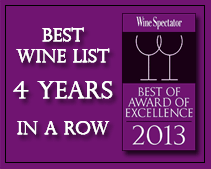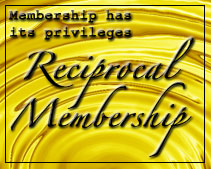Overview of Baguio, one of Philippines most iconic travel destination north of Clark, Philippines
January 31, 2011
Baguio Overview
Welcome to Baguio, one of Philippines most iconic travel destinations and home to an amazing array of sights, activities and events. Even first time visitors to Baguio will quickly be enthralled by how fun and fascinating Baguio really can be. For those looking a glimpse of the real Philippines, or just a fun night out, Baguio mixes old world charm with a modern and vibrant night life. Click the general information links below for further information.
Also known as the ‘City of Pines’, Baguio is the summer capital of the Philippines. Easily accessible by road from Manila, this cool retreat is a popular weekend getaway for many as well as a regular stop-off for international tourists touring the country.
Baguio’s location 1,500m above sea level in the mountainous region of Cordillera makes it one of the few places in the Philippines with a relatively cool and pleasant climate. The beauty of the surrounding mountains can be enjoyed at the Mines View Park, a major draw.
Baguio is a relaxed place with a laid back lifestyle, but its history is one of early struggles and fierce battles between natives and Spanish colonials wanting to exploit the rich natural resources. In the early 1900s, the Americans saw the potential of Baguio as a cooler recreational centre than Manila and built a road linking Baguio with the capital, ultimately leading to an explosion of local and foreign visitors.
Session road is now the heart of modern Baguio with an array of shopping boutiques and eateries. With Baguio being the gold-mining region of the Philippines, it’s a good place to buy jewellery or local handicrafts.
One of the best times to visit Baguio is in February during the Flower Festival, when the city comes alive with floats, parades, and traditional dance displays. If you miss the festivities, Baguio has a lively and varied nightlife year-round with a good mix of restaurants, bars and discos offering plenty of options for those who want to party late into the night.
Accommodation here is centred on intimate and cosy hotels. These provincial style lodgings offer comfortable stays that allow visitors to get acquainted with the Philippine style hospitality which Baguio is famous for.
History
The early part of the 19th century saw the Spanish exploring the mountains of northern Luzon. The fertile lands and abundance of minerals made this a prime area. The wealth attracted fortune seekers that converted the locals to Christianity and exploited the natural resources.
The Spanish colonial rulers found it difficult to control the natives, with strong objections from the proud, local mountain folk. The land was eventually divided into ‘rancherias’ and controlled by the landed aristocracy.
When the Americans arrived in 1900, the rancheria of Baguio didn’t consist of much more than a handful of houses and no roads. The new arrivals saw Baguio’s potential as an ideal location for a summer retreat from the lowland heat in Manila. By November 1900, a civil government was established in Benguet, with Baguio chosen as the capital and principal health resort for the Philippines.
The early 20th century was a period of development for Baguio, during which time the first road linking Manila with Baguio was built and named Benguet road. The American colonial rulers passed a resolution on 1 June 1903 calling for the construction of townships and further development of transportation. The resolution also officially identified Baguio as the Philippines’ summer capital.
The years before WWII were prosperous for Baguio, from the establishment of the first telephone system, to the first residential and commercial property sales in 1906, the opening of Baguio General Hospital and the building of a Country Club. The first aircraft landed at Baguio Airport in 1919 and by the time WWII broke out Baguio was a fully working, thriving city.
The war took its toll on Baguio, which was a major target of the Japanese air force. Ultimately the Japanese conquered the city and established a military base and concentration camp. After an intense struggle, combined Filipino and American forces freed Baguio from the Japanese in 1945, but the cost to Baguio was high. The city was all but destroyed, with residents losing their homes and having to seek cover in the cathedral.
The Japanese leader of Baguio, General Yamashita, formally signed an unconditional surrender at the home of the US Ambassador in Baguio on 3 September 1945. Following Japanese withdrawal, Baguio slowly rose from the ashes of war. Baguio has since re-emerged as the education, commercial and recreational heart of the Cordilleras.
Baguio suffered further devastation in the earthquake of 1990, which caused major destruction to the city’s buildings and infrastructure. The city has recovered and increasing numbers of hotels and other developments have sprung up since. Modern Baguio is a popular destination with Filipino and overseas visitors alike.
Weather
Baguio benefits from a pleasant climate. Compared to the Filipino lowlands, the weather here is cool and refreshing. While people in Manila typically struggle through temperatures in the mid to high 30s (°C), Baguio enjoys much more comfortable temperatures that rarely exceed 26°C.
However, during the rainy season in the Philippines, which runs from June to October, Baguio is not so fortunate. During a normal wet season, Baguio sees twice as much rain as Manila. As the rain dries up, Baguio becomes a tropical paradise with people flocking here to escape the heat and humidity elsewhere in the country. Christmas is a good time to visit, when the evening temperatures are cool enough for visitors to enjoy sitting around bonfires.
Are these articles useful for enhancing your wine and dine experience in the Philippines. Do they also help you with travel, leisure, vacation, dining out, nightlife and other leisure activities plans in Manila and other major cities of Philippines? Yats Restaurant hopes to provide you with ample information so you can plan your trips to Pampanga Angeles City Clark Freeport Zone whether you are travelling from Manila or other Asian countries such as Hong Kong, Shanghai, Singapore, Malaysia or Korea.
Restaurant reservations in Manila Philippines, planning of menu, selection of wine for dinner and booking a private function and event in Angeles City Clark Freeport Zone can all be handled. Yats Restaurant and Wine Bar has been regarded by many to be the premier restaurant north of Manila Philippines. Its 3000-line award-winning restaurant wine list has kept many wine lovers happy dining in this restaurant in Angeles City Clark Philippines for over a decade.
Yats Restaurant and Wine Bar was built by Hong Kong-based Yats International in 2000 to provide a world-class cozy fine dining restaurant, business meeting facilities and venues for private dinners and functions in Pampanga Angeles City Clark Freeport Zone. Pampanga Angeles City Clark Philippines was selected for this restaurant because of safety, clean air, absence of traffic and proximity to Manila and Subic.
For comments, inquiries and reservations, email Restaurant@Yats-International.com or call these numbers:
(045) 599-5600 0922-870-5178 0917-520-4401
Http://www.YatsRestaurant.com
Getting to this fine dining restaurant of Angeles City Clark Freeport Zone Pampanga Philippines
How to get to this fine-dining restaurant in Clark Philippines? Once you get to Clark Freeport, go straight until you hit Mimosa. After you enter Mimosa, stay on the left on Mimosa Drive, go past the Holiday Inn and Yats Restaurant (green top, independent 1-storey structure) is on your left. Just past the Yats Restaurant is the London Pub.









